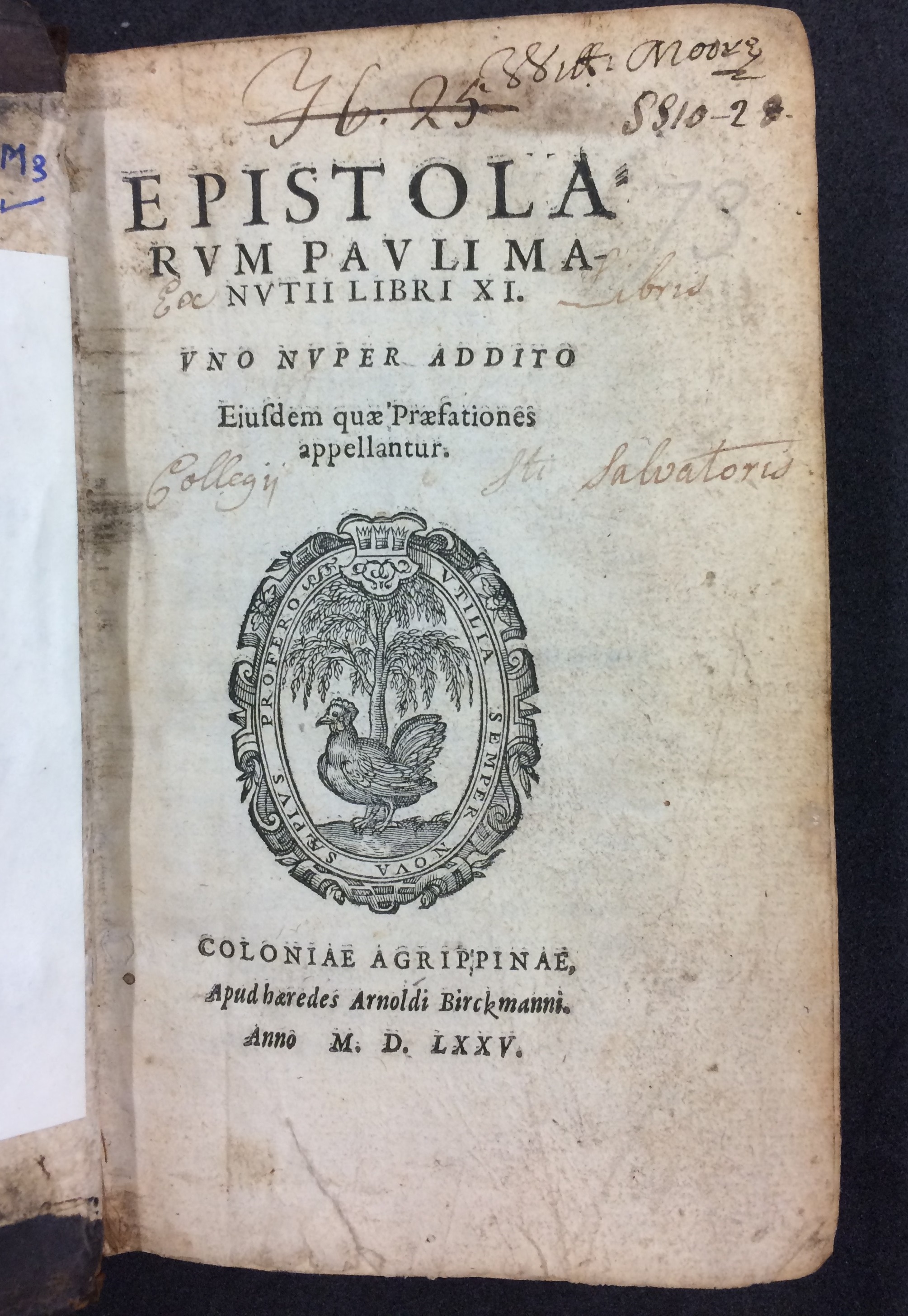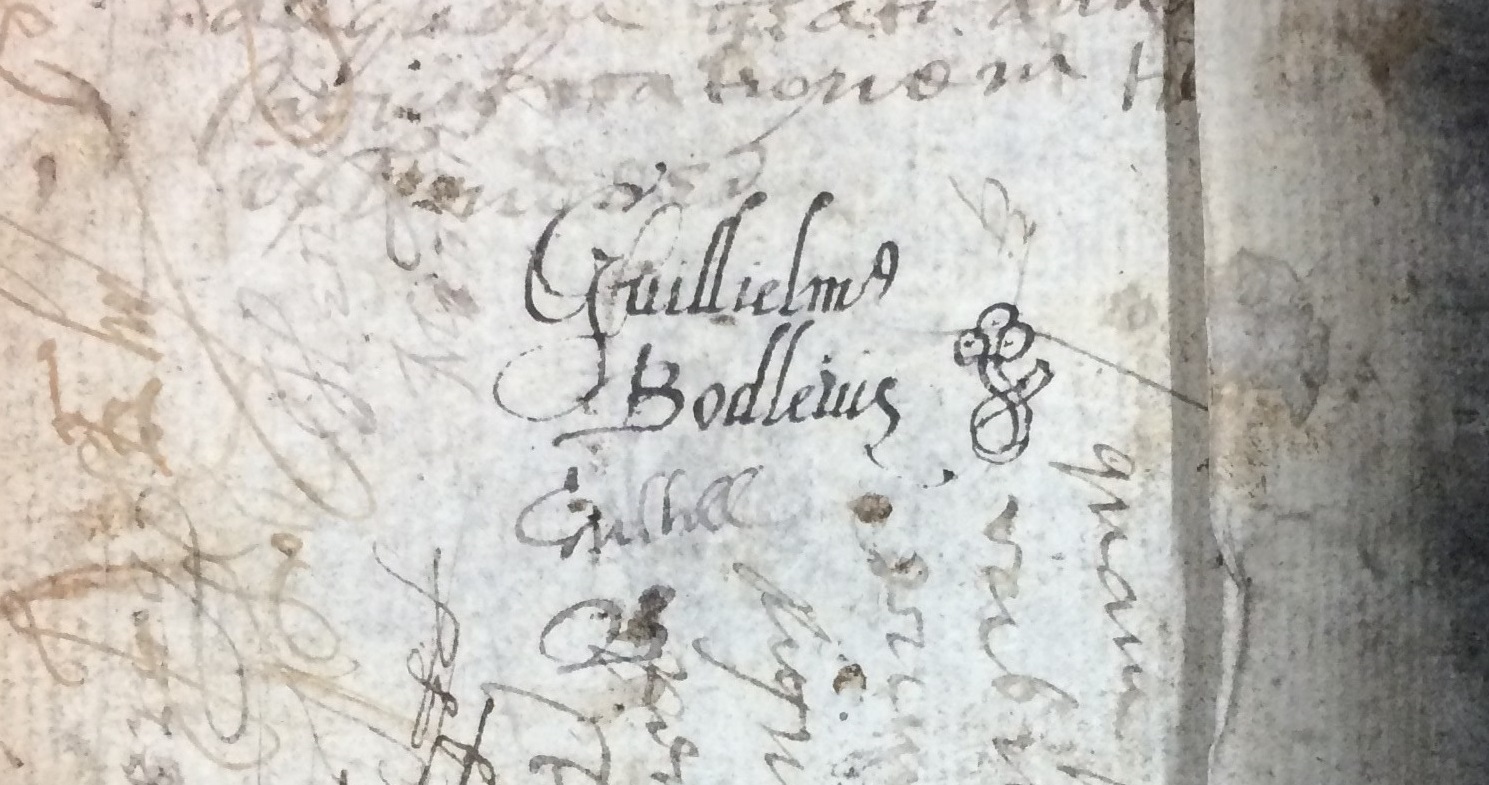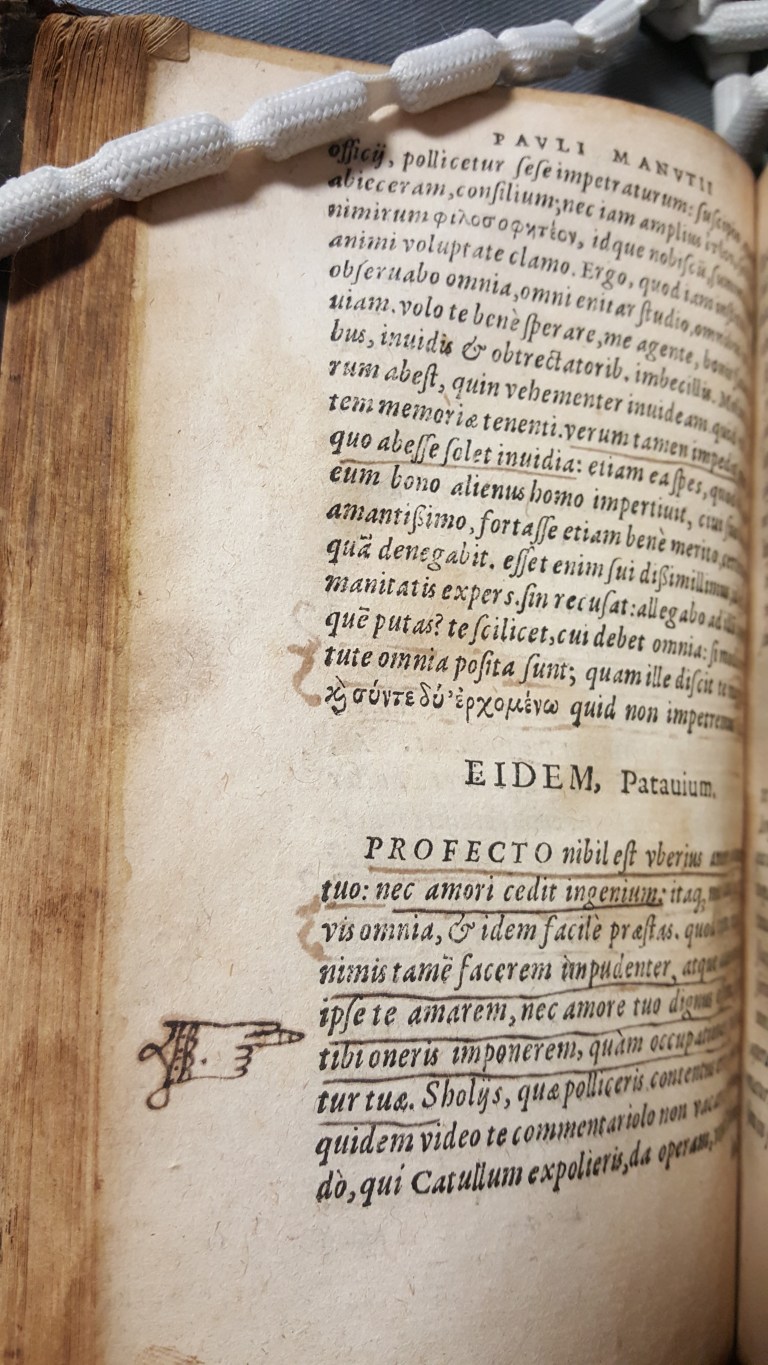500 years of Aldines in Europe: A View From St Andrews
In the latest blog from the Preserving the World’s Rarest Books project, Michela Petris, a student studying at the Università degli Studi di Udine, Italy and a USTC volunteer in the Summer of 2018, highlights the St Andrews University Library’s 1575 copy of Paolo Manuzio’s ‘Epistolae’ printed in Cologne.
This blog was first published on the Preserving the World’s Rarest Books blog, here.

Produced by one of the most prominent Renaissance printing houses, from the beginning Aldine editions were highly collectable, both in Italy and abroad. They remained collectable over the centuries, and today they can be found in libraries across the world. Although these books are far from rare, they epitomise the wide European distribution that was characteristic of Renaissance books. A volume of the Epistolae, written and printed by Paolo Manuzio and later published by others, is representative of the broad and continuous circulation of Aldine editions across borders. A rare copy is held at the University of St Andrews Library, our home institution and Preserving the World’s Rarest Books partner.
The epistolary genre was extremely successful in the sixteenth century. The rise of the book of letters is evidenced by the publication of a large number of anthologies dedicated to the epistles of classical authors, such as Pliny, Seneca, and Cicero (whose letters were, incidentally, among Paolo Manuzio’s finest editorial work). Alongside classical authors, contemporary collections were also very popular. Some of these collections were written by the great humanist authors of the day, such as Erasmus, Juan-Luis Vives or later Justus Lipsius; others, with an eye to providing models in the vernacular; others still were technical manuals, addressing the need for letter-writing in individual trades. The genre was particularly successful in Italy, with the important anthologies containing the letters of prominent humanists such as Marsilio Ficino, Angelo Poliziano, Pietro Bembo and Lodovico Dolce. Italian books of letters in Latin and vernacular alike were distributed widely throughout Europe, and some, such as Paolo Manuzio’s letters, had a programmatic value, to demonstrate the author’s worthiness.
The Latin Epistolae by Paolo Manuzio went through a substantial number of new editions throughout the sixteenth century, both in Italy and across the Alps. Editions appeared in Cologne, Leipzig, London, Lyon, Geneva, and several other printing centres. The edition produced in Cologne (featured above) by Arnold Birckmann in 1575 is an excellent example of the European circulation of the text (USTC 649363). Birckmann, a publisher with strong international networks, evidently saw the potential of this Latin text for the northern markets and must have assessed that the reach of the Italian editions was insufficient to meet demand. The edition was undoubtedly distributed in Germany, as well as abroad. The St Andrews copy (Mor PA6139.E7M3) testifies to this wider circulation both through its production and, as it crossed the Channel early on, through its consumption.


In all, the analysis of this copy would suggest that the European circulation of Paolo’s Epistolae had its roots in the didactic purpose of the work, with the text used as a stylistic model. However, there is no doubt that the Aldine cachet attached to the text played a key role, first in prompting its reprint in Cologne, and then in its northern circulation. Even this German reprint was widely distributed, with copies surviving today in Germany, Italy, Canada and the United Kingdom. The cultural prestige and material quality of Aldine editions have ensured their popularity with readers and collectors ever since they were first produced.
Michela Petris